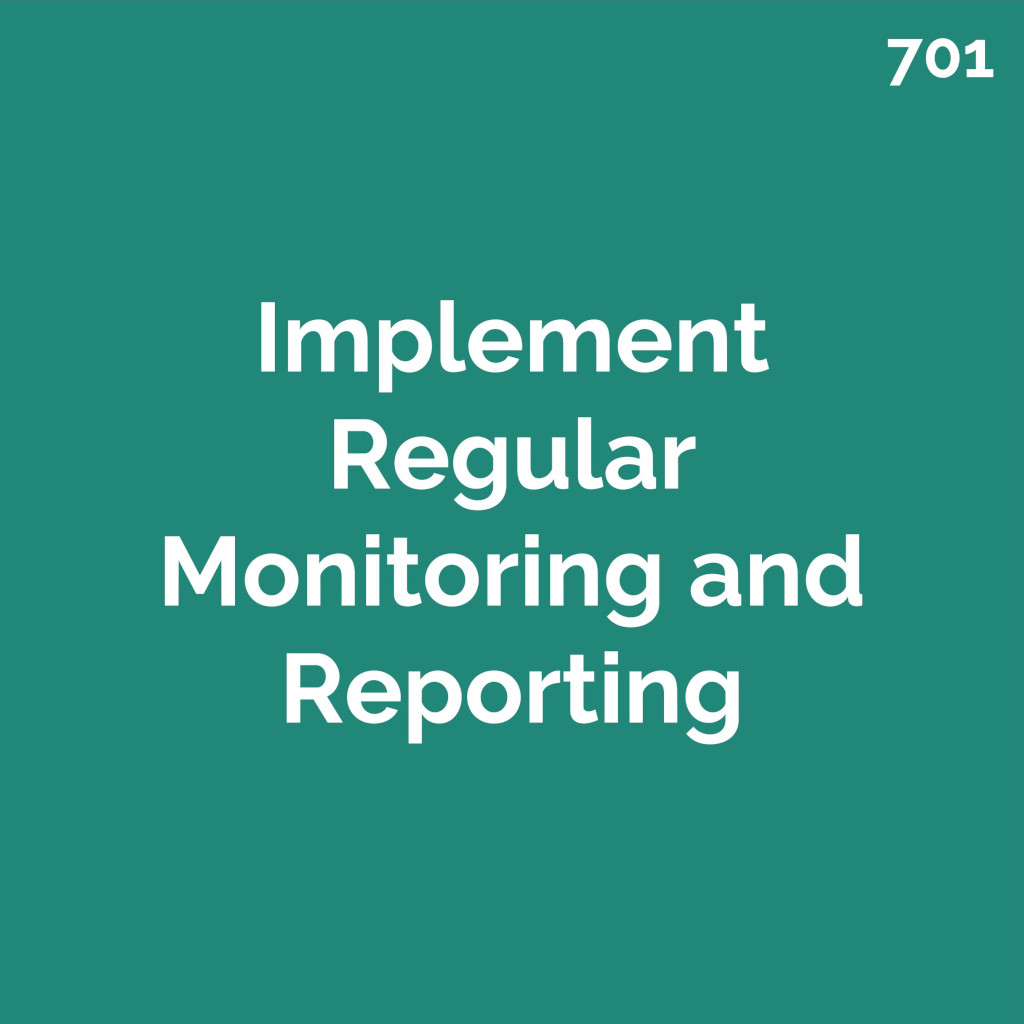Article 701 From the Complete Do It Yourself SEO Checklist For Small Business
Guide to Regular Monitoring and Reporting for SEO
Monitoring and reporting are essential to the success of your SEO efforts. By regularly reviewing your website’s performance, tracking key metrics, and adjusting strategies based on data, you can ensure your small business website continues to grow and attract new customers. This guide explains how to implement effective monitoring and reporting practices in a simple, actionable way for non-technical small business owners.
1. Set Up Regular Audits
Why It Matters: SEO isn’t a one-and-done task. Search engines constantly update their algorithms, and your competitors are always evolving. Regular audits help identify what’s working, uncover problems, and highlight areas for improvement, keeping your website competitive.
How to Perform Regular Audits:
- Use an SEO Audit Tool:
- Check Core Elements:
- Technical SEO: Ensure your site is mobile-friendly, fast-loading, and secure (HTTPS).
- On-Page SEO: Review title tags, meta descriptions, and keyword usage to ensure alignment with your target audience.
- Off-Page SEO: Monitor backlinks to ensure they are from reputable sources and relevant to your content.
- Schedule Audits:
- Perform a comprehensive audit quarterly. For smaller checks, like broken links or page speed, consider monthly reviews.
Tip: Document your findings in a simple spreadsheet to track changes over time.
2. Track Key Metrics
Why It Matters: Tracking metrics provides a clear picture of how your website is performing. It helps you measure the effectiveness of your SEO efforts and identify trends or patterns that can guide future strategies.
Key Metrics to Track:
- Organic Traffic:
- Use Google Analytics to see how many visitors are finding your site through search engines. Look for growth in organic traffic over time.
- Keyword Rankings:
- Bounce Rate:
- This measures the percentage of visitors who leave your site after viewing only one page. A high bounce rate may indicate your content isn’t meeting expectations.
- Click-Through Rate (CTR):
- Check how often people click on your site’s link in search results. Improving meta titles and descriptions can boost CTR.
- Conversion Rates:
- Track actions that matter, such as form submissions, phone calls, or purchases, to measure how effectively your site converts visitors into customers.
- Backlink Profile:
- Use tools like Ahrefs to monitor the quality and quantity of backlinks pointing to your site.
Tip: Set up custom dashboards in Google Analytics or use tools like Google Data Studio to visualize your metrics in one place.
3. Adjust Strategies Based on Data
Why It Matters: SEO is an ongoing process that requires flexibility. By analyzing your data and adjusting strategies accordingly, you can capitalize on what works and fix what doesn’t, ensuring your efforts lead to consistent growth.
How to Adjust Strategies:
- Identify Patterns:
- Look for trends in your data. For example, if organic traffic spikes after publishing a blog post, consider creating more content on similar topics.
- Refine Your Keywords:
- If some keywords aren’t driving traffic, revisit your keyword research to find better opportunities. Use tools like Ubersuggest for fresh ideas.
- Fix Underperforming Pages:
- Pages with high bounce rates or low conversion rates may need better content, improved design, or clearer calls-to-action (CTAs).
- Double Down on What Works:
- If a particular strategy, like guest blogging or video marketing, drives significant traffic and engagement, allocate more resources to it.
- Stay Updated:
- Keep an eye on industry news and Google’s algorithm updates. This helps you adapt quickly to changes that could affect your rankings.
Tip: Treat your SEO strategy as a living document that evolves based on regular insights and feedback.
By setting up regular audits, tracking key metrics, and adjusting strategies based on data, you can ensure your SEO efforts remain effective and aligned with your business goals. Monitoring and reporting may seem daunting at first, but with the right tools and a consistent approach, it becomes a valuable routine that drives long-term success.
Need Expert Help?
The team at Wisecrowd Design is standing by to help you with all facets of your website performance.


